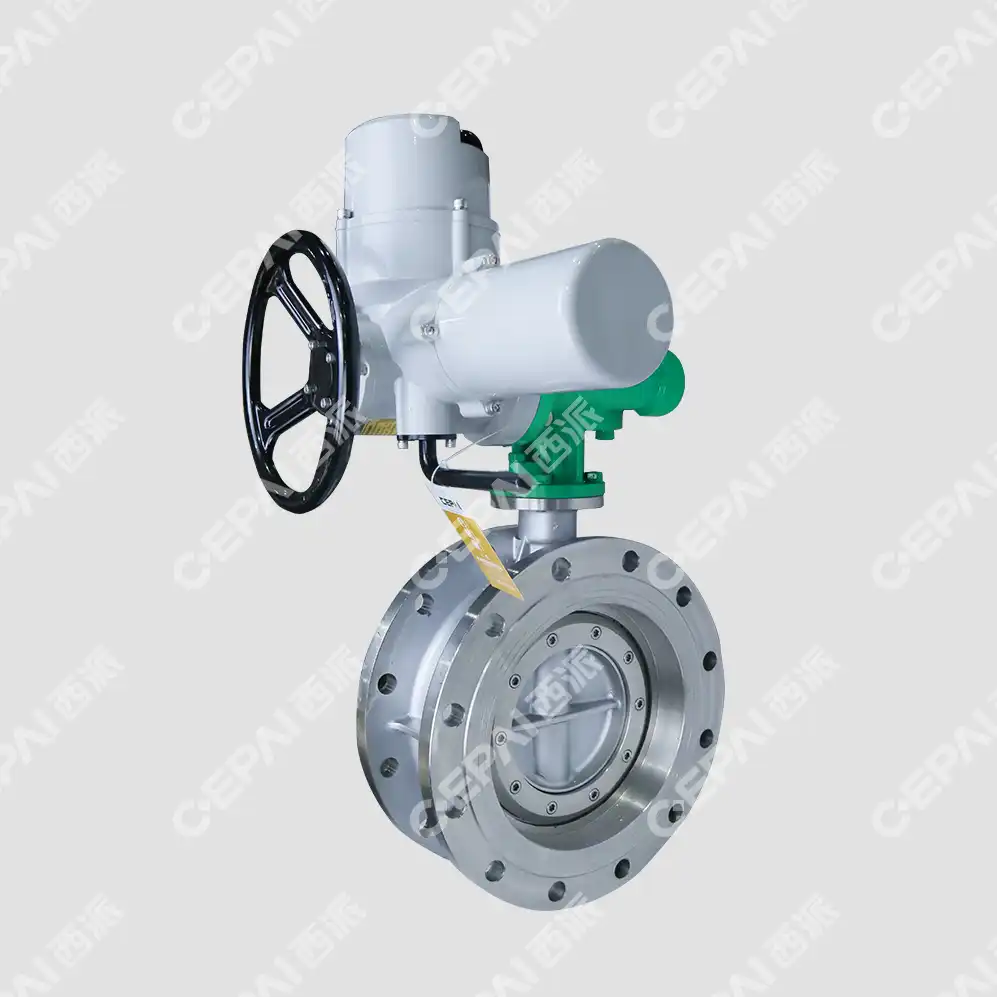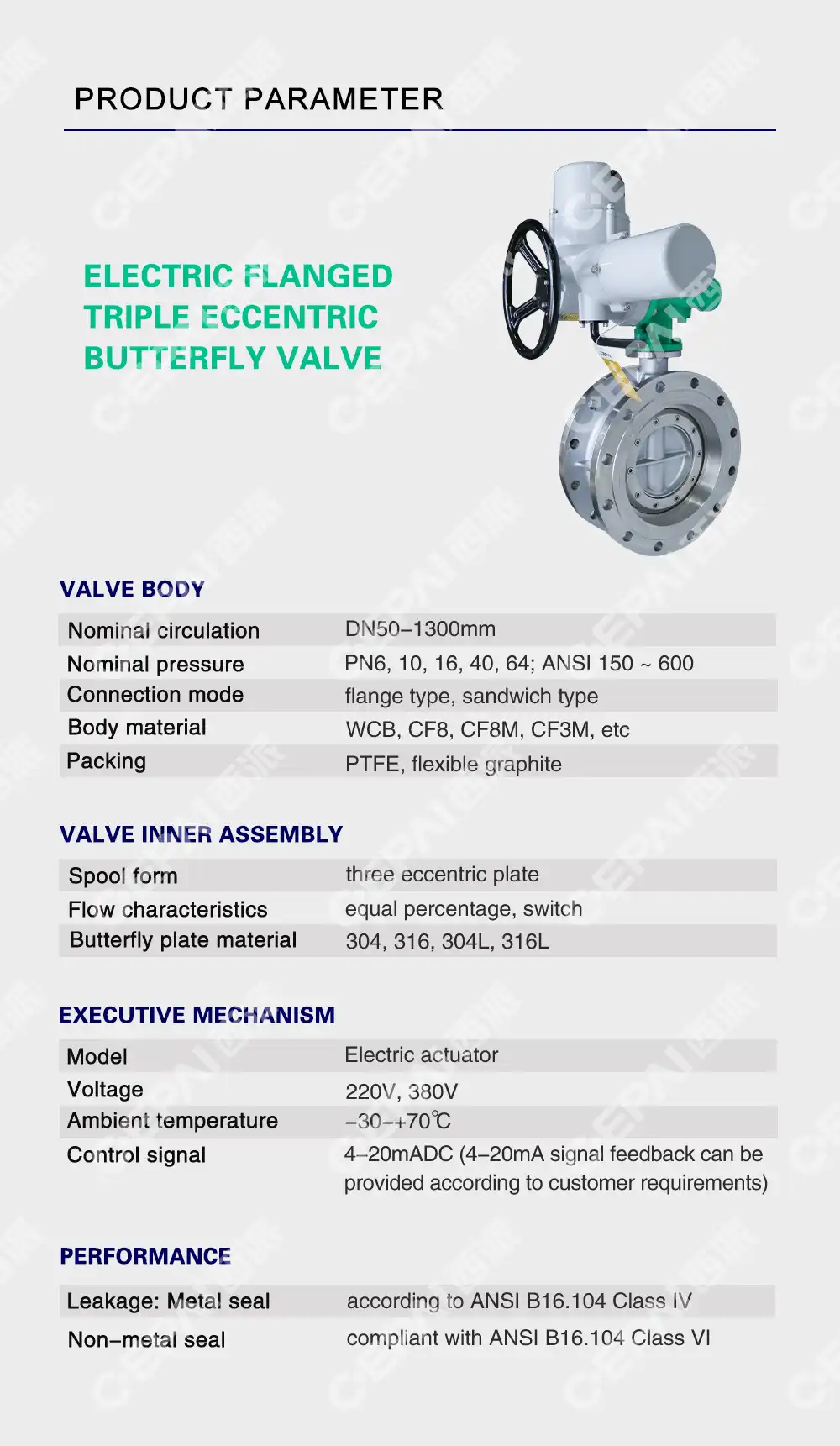Understanding the Triple Offset Butterfly Valve Design
The Evolution of Butterfly Valve Technology
Butterfly valves have come a long way since their inception. The triple offset design represents the pinnacle of butterfly valve technology, addressing the limitations of its predecessors. Unlike conventional butterfly valves, which rely on rubber seats and experience significant friction during operation, triple offset valves employ a metal-to-metal sealing mechanism. This advancement allows for tighter shut-off, reduced torque requirements, and improved longevity.
Key Components of a Triple Offset Butterfly Valve
The triple eccentric butterfly valve consists of several crucial components that contribute to its exceptional performance. The valve body houses the disc, which is the primary flow control element. The stem connects the disc to the actuator, enabling precise control over the valve's position. The seat ring, typically made of resilient materials, ensures a tight seal when the valve is closed. The unique offset design of these components is what sets the triple offset valve apart from traditional butterfly valves.
The Three Offsets Explained
The term "triple offset" refers to the three distinct geometric features that define this valve type. The first offset moves the stem away from the centerline of the pipe and valve body. The second offset positions the stem behind the plane of the sealing surface. The third offset creates a conical sealing surface, resembling a cam action. These offsets work in harmony to eliminate rubbing between the disc and seat, resulting in reduced wear, lower torque requirements, and improved sealing performance.
Advantages of Using Triple Offset Butterfly Valves
Superior Sealing Capabilities
One of the most significant advantages of triple offset butterfly valves is their exceptional sealing performance. The metal-to-metal sealing mechanism, combined with the unique offset design, allows for bi-directional, zero-leakage shut-off. This tight seal is maintained even under high-pressure conditions, making these valves ideal for critical applications where leakage is unacceptable. The absence of soft seats also enhances the valve's ability to withstand high temperatures and corrosive media without compromising seal integrity.
Reduced Maintenance and Extended Service Life
The elimination of friction between the disc and seat in triple eccentric butterfly valves translates to significantly reduced wear and tear. This design feature results in lower maintenance requirements and extended service life compared to traditional butterfly valves. The metal-to-metal sealing mechanism is less prone to degradation over time, ensuring consistent performance throughout the valve's lifespan. Additionally, the reduced torque requirements for operation put less stress on actuators, further contributing to the overall longevity of the valve system.

Improved Flow Characteristics
Triple offset butterfly valves offer superior flow characteristics compared to their conventional counterparts. The streamlined disc design and optimized valve body geometry result in reduced turbulence and pressure drop across the valve. This improved flow performance translates to higher efficiency in fluid control systems, potentially leading to energy savings and enhanced overall system performance. The precise control afforded by the triple offset design also allows for more accurate flow regulation, making these valves suitable for a wide range of applications, from simple on-off control to complex modulating services.
Applications and Industries Benefiting from Triple Offset Butterfly Valves
Oil and Gas Industry
The oil and gas industry relies heavily on triple offset butterfly valves for their exceptional performance in demanding environments. These valves excel in applications such as pipeline isolation, tank farm operations, and offshore platforms. Their ability to handle high pressures, extreme temperatures, and corrosive media makes them ideal for use in refineries, petrochemical plants, and LNG facilities. The zero-leakage capability of triple offset valves is particularly valuable in preventing product loss and ensuring safety in hydrocarbon processing applications.
Power Generation Sector
In the power generation sector, triple eccentric butterfly valves play a crucial role in various systems, including steam lines, feedwater control, and cooling water management. Their high-temperature resistance and excellent sealing properties make them suitable for use in both conventional and nuclear power plants. The valves' ability to provide precise flow control contributes to improved efficiency and reliability in power generation processes. Additionally, their low-maintenance requirements align well with the industry's need for minimal downtime and reduced operational costs.
Chemical and Process Industries
Chemical and process industries benefit greatly from the versatility and reliability of triple offset butterfly valves. These valves are employed in a wide range of applications, from handling corrosive chemicals to controlling the flow of abrasive slurries. Their metal-to-metal sealing mechanism allows for the use of specialized alloys and coatings to withstand aggressive media. The valves' excellent shut-off capabilities and precise control characteristics make them invaluable in batch processing, reactor isolation, and product transfer applications within chemical plants and manufacturing facilities.
Conclusion
Triple eccentric butterfly valves have revolutionized fluid control systems across various industries. Their unique design offers superior sealing, reduced maintenance, and improved flow characteristics compared to traditional butterfly valves. From the oil and gas sector to power generation and chemical processing, these valves provide reliable performance in demanding applications. As industries continue to seek more efficient and durable solutions, triple offset butterfly valves stand out as a versatile and dependable choice for critical fluid control needs.
Contact Us
For top-quality triple offset butterfly valves and expert guidance on valve selection, trust CEPAI Group. Our advanced manufacturing processes and commitment to innovation ensure you receive valves that meet the highest industry standards. Contact us at cepai@cepai.com to learn how our triple offset butterfly valves can enhance your fluid control systems and improve operational efficiency.


_1746598525968.webp)



